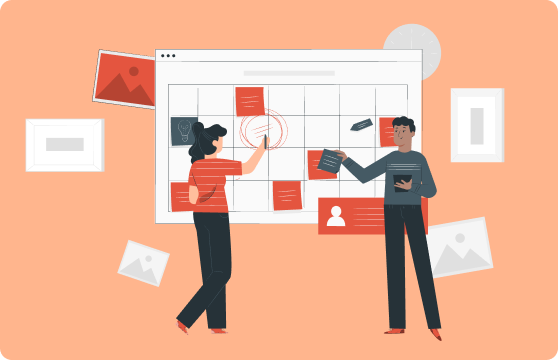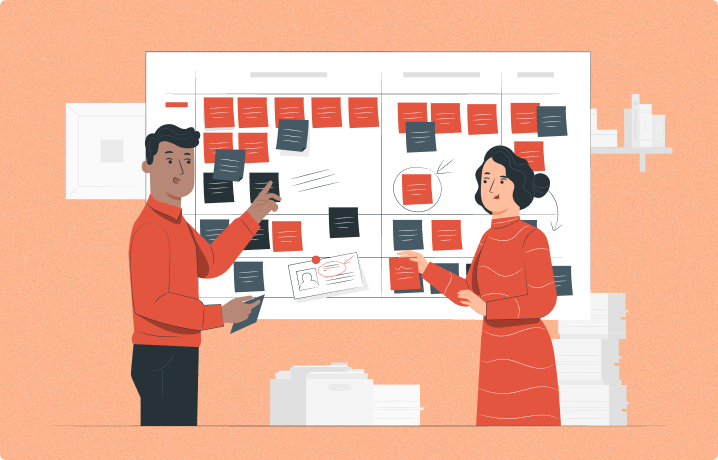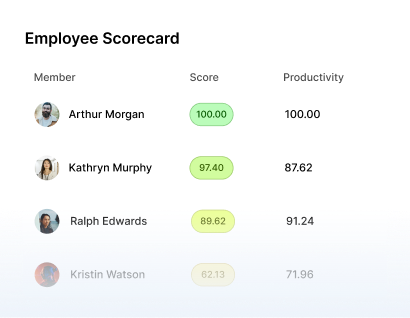6 Key Steps for Effective Strategic Workforce Planning

Workforce planning is a critical component of ensuring that an organization has the right talent in place to achieve its goals both now and in the future.
With the business environment constantly evolving due to technological advancements, economic shifts, and talent shortages, strategic workforce planning has never been more essential.
This guide outlines six key steps to effective workforce planning and how companies can use it to drive long-term success.
Introduction
Workforce planning helps organizations prepare for future talent needs by assessing the current workforce and identifying gaps that need to be filled. It involves anticipating future workforce requirements, aligning HR strategies with business objectives, and developing actionable plans to ensure the right people are in the right roles at the right time. Whether you’re dealing with employee retirements, skill gaps, or changes in market demand, workforce planning is crucial for maintaining operational efficiency.

Step 1: Align Workforce Planning with Business Goals
The first step in strategic workforce planning is to ensure that the plan is aligned with your organization’s overall business goals. This ensures that the workforce supports the strategic direction of the company. Consider the following when aligning your workforce planning process:
- Business Objectives: Understand the short-term and long-term goals of the business, such as market expansion, new product launches, or digital transformation initiatives.
- Departmental Needs: Work closely with department leaders to identify the specific skill sets and roles needed to support their operations.
- Budget Constraints: Align workforce needs with available budgets to ensure financial feasibility.
Step 2: Assess the Current Workforce
After aligning with business goals, it’s essential to take stock of your existing workforce. Conducting a thorough assessment helps identify the current skills, capabilities, and potential gaps within your team. Here are some methods for assessing your workforce:
- Skill Audits: Evaluate the skills and competencies of your current employees to see if they meet future business needs.
- Employee Surveys: Use surveys and feedback to understand employee engagement levels, job satisfaction, and willingness to adapt to new roles.
- Performance Reviews: Analyze performance review data to identify top talent, areas for improvement, and employees ready for promotions or new opportunities.
Step 3: Identify Future Workforce Needs
Once you’ve assessed the current workforce, the next step is to project future workforce needs. This includes forecasting the number and type of employees required to meet upcoming challenges or opportunities. Consider these aspects when forecasting:
- Technological Changes: Will advancements in AI, automation, or data analytics require new skills?
- Employee Turnover: Consider retirement projections, turnover rates, and the potential loss of critical employees.
- Market Trends: Stay updated on industry trends that may affect demand for specific roles, such as increased reliance on remote work or specialized IT skills.
Step 4: Develop Talent Acquisition and Retention Strategies

With a clear understanding of your current and future workforce needs, the next step is to create strategies for acquiring and retaining talent. Recruitment and retention should be tailored to attract high-quality candidates and keep your existing workforce engaged. Key strategies include:
- Recruitment: Develop a targeted recruitment strategy that highlights your company’s strengths, such as competitive salaries, growth opportunities, or a strong company culture.
- Retention: Implement employee engagement programs, career development opportunities, and work-life balance initiatives to retain top talent.
- Diversity and Inclusion: Prioritize diversity in your hiring processes to create a more innovative and representative workforce.
Step 5: Bridge Skills Gaps Through Training and Development
After determining what skills are needed for the future, it’s time to invest in upskilling and reskilling your current workforce. This can help you close any skills gaps and ensure that your organization remains competitive. Ways to bridge skills gaps include:
- Upskilling Programs: Offer training courses, workshops, or certifications that help employees enhance their current skill sets.
- Mentorship: Implement mentorship programs where experienced employees can guide and develop less experienced team members.
- Cross-training: Encourage employees to learn skills in different areas of the business, increasing their versatility and value.
Example: A company investing in digital transformation might create a reskilling program to train employees on new software and digital tools essential for their jobs.
Step 6: Monitor and Adjust the Workforce Plan

Workforce planning is an ongoing process that requires regular monitoring and adjustments. Business needs can change quickly due to market conditions, technological advances, or organizational restructuring. To ensure your workforce plan remains effective:
- Review Metrics Regularly: Track key workforce metrics such as turnover rates, employee performance, and the success of recruitment efforts.
- Conduct Regular Assessments: Periodically reassess your workforce to ensure the skills and capabilities still align with business objectives.
- Adapt Quickly: Be agile in adjusting your plan if unforeseen changes, such as economic downturns or a shift in market demand, occur.
Maximize productivity of your business
Track employee productivity and simplify work with them
Conclusion
Workforce planning is vital for maintaining a competitive edge in today’s fast-paced business environment.
By following these six steps—aligning workforce planning with business goals, assessing the current workforce, identifying future needs, developing talent strategies, bridging skills gaps, and continuously monitoring the plan—organizations can create a strong and adaptable workforce.
Strategic workforce planning not only addresses immediate challenges but also ensures long-term success by preparing for future changes in the industry.
– The Monitask Team
Frequently Asked Questions
How often should a company update its workforce plan?
Ideally, a workforce plan should be reviewed and updated annually. However, significant business changes, such as mergers, acquisitions, or shifts in market demand, may require more frequent updates.
What are the benefits of workforce planning?
Workforce planning offers several benefits, including improved employee retention, better alignment of talent with business goals, the ability to address skills gaps proactively, and more efficient recruitment processes.
How can technology assist in workforce planning?
Technology plays a key role in workforce planning by providing data-driven insights. People Analytics tools can help organizations track workforce trends, predict talent needs, and measure the success of recruitment and development initiatives.



